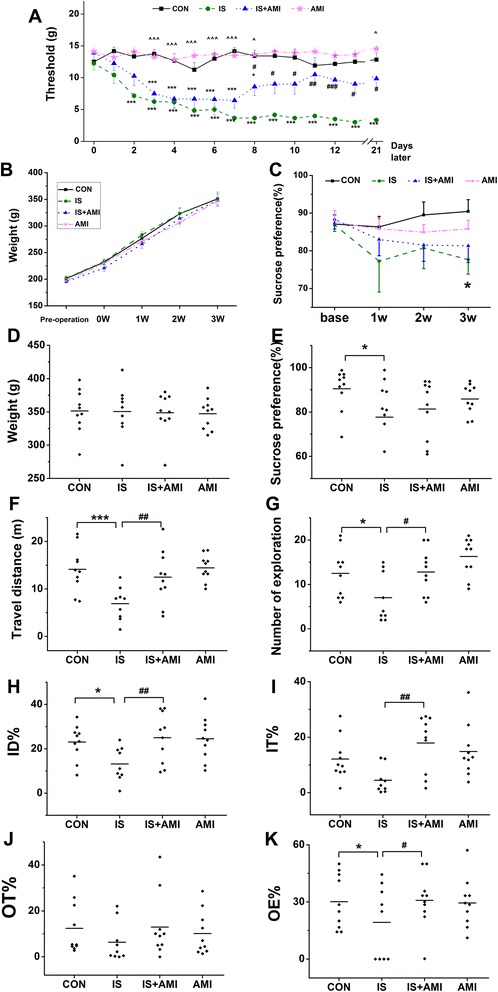Fig. 1.

Behavioural studies of allodynia, depression, and anxiety. a: Facial withdraw threshold. b–e: Depressive behaviours. f–g: Anxiety behaviours. a–c: The horizontal axis shows time, and the vertical axis shows the values. The facial withdraw threshold (a) decreased gradually in the inflammatory soup (IS) and IS + amitriptyline (AMI) groups, and was significantly different form the control (CON) group on Day 3 (***P < 0.001, IS and IS + AMI group vs. CON group). However, the threshold increased gradually in the IS + AMI group on Day 8 and was significantly different from the IS group (#P < 0.05, vs. IS group). No difference in weight was detected among the four groups (b, d) (P > 0.05). Sucrose preference (c, e) was significantly lower in the IS group than that in the CON group after 21 d of administration (*P < 0.05, IS vs. CON); no difference was found between the IS and IS + AMI groups. Travel distances (f), number of explorations (g), and inner zone distance percent (ID%) (h) on the open field (OF) test were all significantly lower in the IS group than those in the CON group but recovered after AMI treatment (*P < 0.05 and ***P < 0.001, IS vs. CON; #P < 0.05 and ##P < 0.01, IS vs. IS + AMI). Inner zone time percentage (i) tended to be lower in the IS group. Open-arm time percentage (OT%) (j) and entry percentage (OE%) (k) on the elevated plus maze test were lower in the IS group than those in the CON group; only OE% was significantly different (*P < 0.05, IS vs. CON; #P < 0.05, IS vs. IS + AMI)
